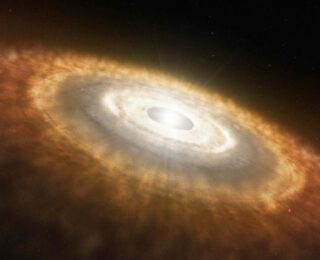
by Jana Steuer | Dec 10, 2022 | Daily Paper Summaries
The number of super-Earths with small semimajor axis appears to decrease with the mass of the host star. How can this be, if more massive stars have more massive protoplanetary disks and thus more material to build planets from? An icy dead zone may be the answer to this riddle!

by Sabina Sagynbayeva | Oct 31, 2022 | Daily Paper Summaries
Happy spooky season, folks! This is a story about a haunted protoplanetary disk…

by Mark Popinchalk | Oct 21, 2022 | Daily Paper Summaries
In today’s episode, the star’s have been preparing some planets. But have they all been using the same recipe to form them? We will have to “taste” their compositions to find our winner!

by Sabina Sagynbayeva | Aug 29, 2022 | Daily Paper Summaries
The authors of today’s paper decided to take a less radical approach into investigating the trans-Neptunian objects. Maybe we don’t need Planet 9 after all?

by William Balmer | Aug 23, 2022 | Daily Paper Summaries
Protoplanetary disks don’t exist in isolation; when young stars pass each other by, their gravitational encounter can disrupt, or maybe even kickstart, planet formation.

by Lina Kimmig | Aug 17, 2022 | Classics, Current Events
Prof. Willy Kley, a pioneer in the field of protoplanetary disks, unexpectedly died in December 2021. Today’s post commemorates Willy’s legacy and summarizes a scientific conference that was held in memory of Willy in the beginning of August.






